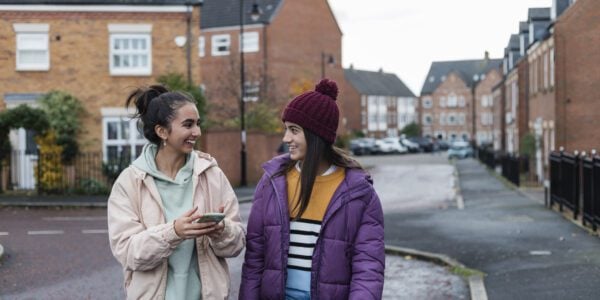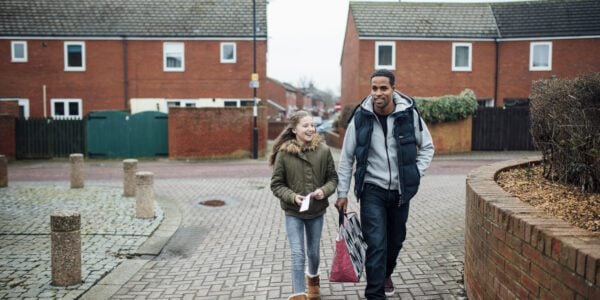
03/07/20
3 min read
People from Black, Asian and minority ethnic (BAME) backgrounds have had higher levels of depression and anxiety throughout the COVID-19 lockdown, as well as lower levels of happiness and life satisfaction, finds UCL’s Covid-19 Social Study.
In addition, whilst 21% of people from white backgrounds have reported being often lonely during lockdown, this figure has been 23% amongst those from BAME backgrounds. Thoughts of death, although affecting fewer than 15% of people, have been on average a third higher in BAME groups and whilst fewer than 5% of people have reported self-harming during lockdown, these reports have been around 70% higher amongst BAME groups (4-7% reporting self-harming compared to 3-4%). Similarly on average fewer than 1 in 10 people have experienced psychological or physical bullying or abuse during lockdown, but reports have been around 80% higher amongst BAME groups (average 8-12% reporting each week compared to 5-6% in white ethnic groups).
Launched in the week before lockdown started, this ongoing study is funded by the Nuffield Foundation with additional support from Wellcome and UK Research and Innovation (UKRI). It is the UK’s largest study into how adults are feeling about the lockdown, government advice and overall wellbeing and mental health with over 70,000 participants who have been followed across the last 15 weeks.
Individuals from BAME backgrounds have also been more worried about unemployment and financial stress than those from white ethnic groups. But worries around catching COVID-19 and access to food have been about the same. BAME groups’ confidence in Government has been around 14% lower across the lockdown period, confidence in the ability of the health service to cope with the pandemic has been 12% lower, and confidence that essentials will be accessible has been 5% lower.
Levels of ‘complete’ compliance with lockdown measures have dropped further across all groups over the last week, especially amongst younger adults, but ‘majority’ compliance remains at around 90% overall. ‘Good’ compliance has been similar across ethnicity, apart from decreasing amongst people from BAME backgrounds shortly after the death of George Floyd when protests took place across the UK, although it has since increased. ‘Complete’ compliance has been consistently around 10% lower amongst BAME groups.
Lead author, Dr Daisy Fancourt (UCL Epidemiology & Health Care) said: “Our study shows that people from BAME backgrounds are experiencing more negative effects of lockdown than those from white backgrounds.
“This is especially true around direct and indirect mental health issues. These findings may be due to ethnic inequalities in the UK, with people from BAME backgrounds being statistically more likely to be in risk categories for adverse experiences during the pandemic, such as having lower levels of household income and poorer baseline mental health. Differences in experiences and inequalities themselves may also be products of individual and systemic racism, an issue highlighted by the Black Lives Matter protests in recent weeks.”
In the past week, depression and anxiety levels have shown improvements, as have levels of happiness and life satisfaction, although all still remain below the usual averages. 57% of people report that their mental health has been about the same as before COVID-19, with 8% actually reporting it being better than usual. 35% of adults report it has been worse than usual, a figure which increases to around half when looking at young adults, people with a diagnosed mental illness, and people from BAME backgrounds.
Cheryl Lloyd, Education Programme Head at the Nuffield Foundation said: “We know that people from some ethnic minority groups have higher mortality and infection rates than those from white ethnic groups, and these findings show that is also true when it comes to reporting poor mental health, even though levels of anxiety about catching Covid-19 are similar between the ethnic groups compared in this report.
“In trying to understand the reasons for these differences, it is important to bear in mind the other ways in which people from minority ethnic groups are being disproportionately impacted by the pandemic, for example through being more likely to work in health and social care, and, particularly for men, being more likely to work in shut-down sectors. There will also be notable differences between different minority ethnic groups in relation to their experience of the pandemic.”
The study team has also received support from Wellcome to launch an international network of longitudinal studies called the COVID-MINDS Network. Through the network, dozens of scientists and clinicians are coming together internationally to collate results from mental health studies running in countries around the world and compare findings. The initiative will support launching new mental health studies in other countries and show whether actions taken in specific countries are helping to protect mental health.















































